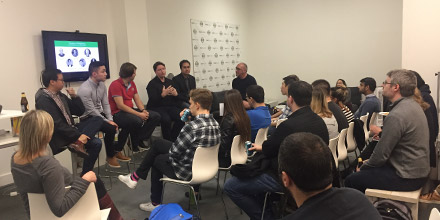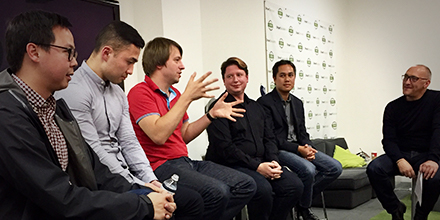Talent Acquisition teams could be faced with a fantastic future: A recruiter posts a job, publishes it with one click to job boards around the web, gets a couple hundred candidates, an intelligent machine automatically sorts through this stack of candidates, and highlights the top 10 most qualified candidates tuned to the specifications for that job, the company and the team.
This dream of matching the right candidates to the job, which seemed so far off 10 years ago, is rapidly becoming reality. With machine learning and AI coming into its own in the last 2 years, AI is everywhere.
Big players are also jumping into the ring. IBM announced in September that they are launching Watson for recruiting. The tool will add an intelligence layer on top of a recruiting ATS or CRM system to rank candidates based on a fit score. Google announced on Tuesday that they are launching a new Cloud Jobs API in partnership with resume database giants such as Careerbuilder and Dice. This new machine learning service will apply Google’s algorithms to help job seekers to figure out their fit for a particular job.
At a recent Hiring Success meetup hosted at SmartRecruiters, a group of panelists included:
- Anton Dam, Founder @ Restless Bandit
- Garry Ma, Chief Product Officer @ Brilent
- Cole Goeppinger, VP of Engineering @ Entelo
- Tony Le, Sr. Director of Global HR Operations @ IAC Publishing
- Vitaly Obernikhin, CEO and Co-founder @ AmazingHiring

They all shared insights on how their unique machine learning solutions are addressing the problem of matching jobs to candidates. Here are the 3 biggest things we learned from our panel:
- Machine Learning is here to stay. Predictive intelligence, matching technology is only going to get better over time.
- Recruiters and Talent Acquisition teams should develop a strategic approach to supplement their work with machine learning technology. Machine intelligence will not replace, but enhance recruiter’s ability to identify the best matches for the job.
- There is a lot of opportunity in this space, but access to structured, quality data traditionally owned by an ATS or other systems of record will be a deciding factor for machine learning startups to achieve scale.
Smarter. Better. Faster.
The difference between the success of machine learning technology today and the failures of machine learning technology 10 years ago is the convergence of data quality, server infrastructure, and the maturity of machine learning algorithms.
- The digitization of vast amounts of data over time and the open APIs that have followed, allow access to a lot of data that went previously unrecorded.
- Machine learning models have achieved a state of maturity and are now easily accessible outside of academia.
- Cloud computing allows companies to process vast amounts of data without the high cost, and to quickly scale data computations up or down as needed.
Our panelists highlighted how their technologies are approaching the problem from different angles. For example:
Entelo allows companies to mine insights from the Social web to supplement candidate profiles with social insights. They are also building their machine learning algorithm on top of this data.
Brilent is incorporating graph search technology to quantify the relationships between candidate’s work experiences, skills and education.
AmazingHiring applies a supervised learning model to use recruiters’ knowledge for intelligent searching.
Restless Bandit has structured their technology and machine learning algorithms to constantly search through companies’ databases of past resume data.
As companies train their models with more data, these technologies will continue get better and better at distinguishing the attributes that make a candidate successful in their job.
Not Human vs. Machine, but Human + Machine
Recruiters should not fear a takeover by machines. Machine learning models are only as good as the data and the feedback loop that they receive. These models always need a constant flow of training data in order to get better. For example, both Brilent and Restless Bandit allow recruiters to tune the importance of specific attributes on a job to job basis. The signals for successful machine intelligence, is a mixture of the perceived quality of candidate from the recruiter, and the ultimate hiring decision made by the recruiting team.
Panelists also shared their perspectives on the effectiveness of machine intelligence, as its impact depends on the different areas of recruiting it’s applied to. Human beings are not tuned to perform boring repetitive tasks. Computers however are designed with an endless capacity for repetitive computations. In such cases of high-volume recruiting and for professions with clearly defined skill sets, machines can help recruiters to be more efficient and productive. An area such as “Executive search” is a different story. The role of the recruiter here is to be the salesperson and advocate for their company.
Machines are still a ways off from replicating that human relationship. Recruiters should take advantage of the technology to optimize their processes. Machines and recruiters, working together, will identify the best talent.
What’s Next
- How will these new machine learning technologies achieve scale along with traditional recruiting software? Algorithms need to get better than recruiters to build trust in the data and technology.
- Is there to be a case made for specialization of AI in specific areas? Will we see companies developing machine learning technology specialized to jobs and industries?
- A lot is being done on the recruiting side, but on the candidate side, how can we use machine intelligence to help candidates with their job search?






